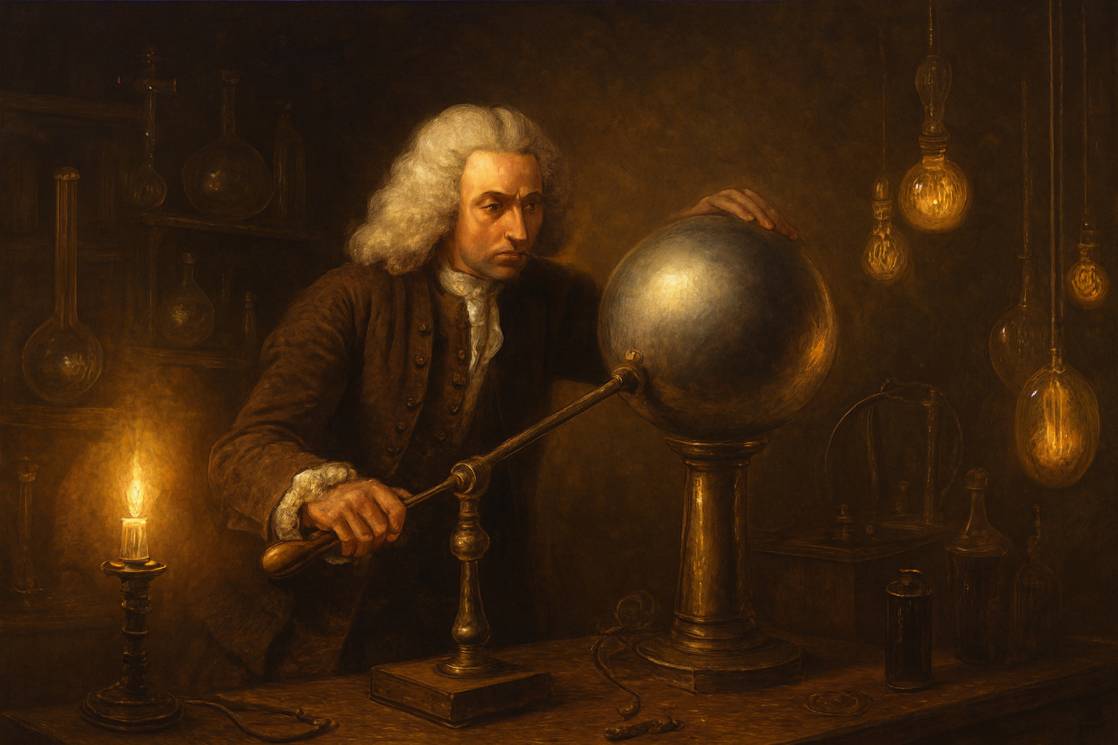We often talk about the “invention” of electricity as if it were a single lightbulb moment (pun intended). But the truth is far more fascinating. Electricity wasn’t invented on a specific date; it was discovered, studied, and harnessed over centuries through the work of countless brilliant minds. The story of electricity is not about its creation, but about our evolving understanding of a fundamental force of nature.
So, if you’ve ever wondered, “When was electricity invented?” the most accurate answer is: It wasn’t. It was always there. We invented ways to understand and use it.
The Ancient Spark: Early Observations
Table of Contents
The earliest known encounters with electricity date back to ancient times. Around 600 BCE, the Greek philosopher Thales of Miletus noted that rubbing amber (elektron in Greek) with animal fur would attract lightweight objects like feathers. This was static electricity. The ancients also marveled at lightning but had no scientific explanation for it. These were mere observations of a mysterious force.
The Centuries of Discovery: Laying the Foundations
Progress was slow for nearly 2,000 years until the Scientific Revolution reignited curiosity.
- 1600: English scientist William Gilbert coined the term “electricus” (Latin for “like amber”) to describe the force that certain substances exerted when rubbed. He was the first to seriously distinguish between magnetic and electric forces.
- 1752: The famous (and dangerous) experiment by Benjamin Franklin with a kite and a key proved that lightning was a form of electrical energy. This groundbreaking discovery unified a terrifying natural phenomenon with the lab-based static electricity scientists were familiar with. He also gave us the terms “positive” and “negative” charge.
- 1800: A pivotal moment. Italian physicist Alessandro Volta created the first true battery, the Voltaic Pile. This was the first device to produce a reliable, continuous electrical current (Direct Current or DC), moving beyond fleeting static sparks. The unit of electrical potential, the Volt, is named in his honor.
The Age of Application: Powering the Modern World
The 19th century saw a flurry of breakthroughs that transformed electricity from a lab curiosity into a world-changing technology.
- 1831: The single most important breakthrough for our modern grid. Michael Faraday discovered the principles of electromagnetic induction, showing how a moving magnet could create an electric current in a wire. This is the fundamental principle behind the electric generator and the transformer.
- Late 1870s: The “War of the Currents” began. Thomas Edison developed the first practical incandescent light bulb and championed Direct Current (DC) for power distribution. Meanwhile, Nikola Tesla (working with George Westinghouse) advocated for Alternating Current (AC), which could travel much farther with less energy loss.
- 1882: Thomas Edison opened the first commercial electrical power plant in the world, the Pearl Street Station in New York City. It provided DC power to a small number of customers in lower Manhattan, marking the birth of the electrical utility industry.
- Late 1880s: Tesla’s AC system won the “war” due to its efficiency. The development of the AC motor and transformer made it possible to build large-scale power plants far from cities and transmit electricity over long distances.
The “invention” of electricity as we know it was this culmination of events. It was the point where scientific understanding (Faraday’s induction), technological application (Tesla’s AC system), and commercial infrastructure (Edison’s power plants) finally came together to create a public utility.
So, while no one person invented electricity, the late 19th century is when humanity truly learned to harness its power and began wiring the world.
FAQ: Your Questions on the History of Electricity
Q1: So, who actually discovered electricity?
Since electricity is a natural force, it doesn’t have a single “discoverer.” Thales made the first recorded observation, William Gilbert gave it a name, and Benjamin Franklin proved its connection to lightning. It was a cumulative effort.
Q2: Did Benjamin Franklin invent electricity?
No. Franklin’s famous kite experiment in 1752 was crucial because it demonstrated that lightning was electrical energy. This was a profound discovery that connected a massive natural phenomenon to the small-scale static electricity studied in labs. He helped us understand it, not invent it.
Q3: When did homes first get electricity?
The first homes began receiving electricity in the early 1880s, starting with those served by Thomas Edison’s Pearl Street Station in New York City (1882). However, this was extremely limited. Widespread electrification in homes across the United States and Europe was a slow process that took decades, lasting into the 1930s and 1940s for rural areas.
Q4: What was the first city in the world to have electric streetlights?
The city of Godalming in Surrey, England, was the first in the world to have public electric street lighting in 1881, using a Siemens generator powered by a waterwheel. However, Thomas Edison’s system in New York soon became the more famous and scalable model.
Q5: What was the “War of the Currents”?
This was a period of intense competition in the late 1880s between Thomas Edison (promoting Direct Current, or DC) and George Westinghouse/Nikola Tesla (promoting Alternating Current, or AC). Edison famously argued DC was safer, while Tesla’s AC system was far more efficient for transmitting power over long distances. Tesla’s AC system ultimately won, forming the basis of our modern electrical grid.
Q6: When was the light bulb invented?
Thomas Edison did not invent the first light bulb, but he invented the first commercially practical one in 1879. He developed a carbon filament that could last for over 1200 hours, making it viable for widespread home and street use. Many inventors had been working on incandescent light for decades before him.

